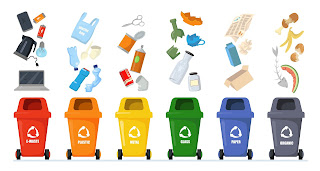Innovative Textile Waste Solutions: Paving the Way to a Sustainable Future
The world is facing a textile waste crisis. With fashion trends changing at breakneck speed and mass production dominating the industry, millions of garments are discarded every day. This results in enormous volumes of textile waste that clog landfills, pollute waterways, and contribute to greenhouse gas emissions. Addressing this problem isn’t just an environmental imperative—it’s a chance to build a more responsible and sustainable future for fashion and beyond.
Understanding the Textile Waste Challenge
The average consumer today buys more clothing than ever before and keeps it for half as long. In the United States, over 11 million tons of textile waste are generated annually. Much of this waste comes from fast fashion, manufacturing scraps, and unsold inventory. Unfortunately, only a small fraction—about 15%—is reused or recycled. The rest ends up in landfills or incinerators, releasing harmful toxins and carbon emissions.
Moreover, textiles are often made of blended materials like cotton-polyester mixes, which are difficult to recycle using conventional methods. Add to that dyes, finishes, and accessories like zippers and buttons, and you have a recycling nightmare. These challenges demand new solutions that address the entire lifecycle of clothing and textiles.
Promising Textile Waste Solutions
Fortunately, innovators, companies, and consumers are stepping up. Here are some of the most promising solutions for managing and reducing textile waste:
1. Closed-Loop Systems
A closed-loop system ensures that textiles are either reused, repurposed, or recycled into new products without ever becoming waste. Brands that embrace circular design principles are creating clothing that can be disassembled and recycled more easily. Take-back programs, where customers return worn garments for recycling, are also a growing trend among eco-conscious companies.
2. Fabric Recycling Technologies
New recycling technologies are tackling the complex problem of blended fabrics. Mechanical recycling can process natural fibers like cotton, while chemical recycling is advancing to separate and reclaim synthetic fibers like polyester. These innovations help recover materials that would otherwise be lost to landfill and turn them into high-quality fibers for new garments.
3. Upcycling and Creative Reuse
Upcycling is a powerful way to transform waste into value. By reimagining old textiles as new, high-quality items—like turning a torn shirt into a patchwork bag or deadstock fabric into limited-edition apparel—designers can divert waste and spark creativity. This approach also fosters a more personal connection with clothing, promoting mindful consumption.
4. Responsible Consumption and Education
Consumer behavior plays a critical role in reducing textile waste. Choosing quality over quantity, supporting ethical brands, and understanding care labels can all extend the life of clothing. Educating consumers about sustainable fashion not only encourages thoughtful purchasing but also highlights accessible textile waste solutions that individuals can adopt in their daily lives. By becoming more conscious shoppers, consumers contribute directly to long-term textile waste solutions that prioritize sustainability over disposability.
5. Corporate Accountability
More companies are recognizing the environmental impact of their operations and incorporating sustainability into their ESG goals. From sustainable sourcing and zero-waste manufacturing to responsible product end-of-life strategies, businesses are beginning to see textile waste not just as a cost—but as an opportunity for innovation and impact.
SwagCycle: Turning Corporate Swag into Sustainable Solutions
While much of the focus is on fashion, another significant source of textile waste is branded merchandise. Companies often overproduce promotional apparel, event swag, and logoed gear, which ends up gathering dust or going straight to the landfill. This is where SwagCycle steps in. SwagCycle helps companies responsibly manage excess branded merchandise by connecting them with donation partners or recycling facilities. By giving unused swag a second life through donation or upcycling, SwagCycle helps brands align with their sustainability goals, reduce waste, and make a positive social impact—all without compromising on brand integrity.




Comments
Post a Comment